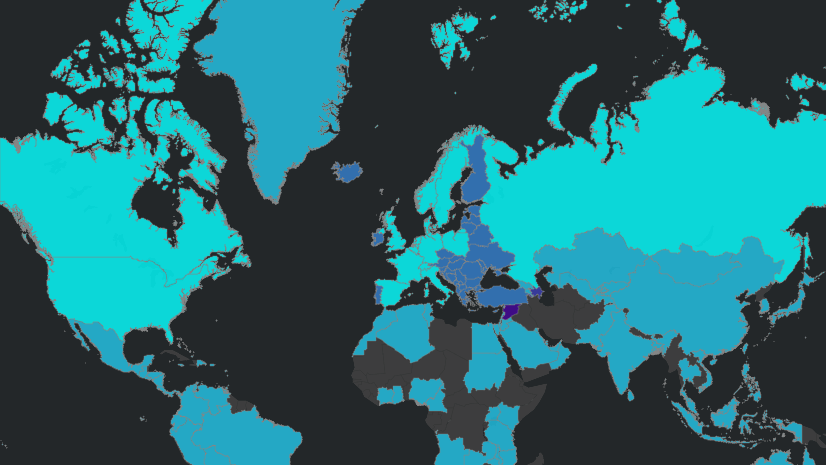The September ArcGIS Online release includes demographic updates for several countries. Read on to learn more about the demographic data. Or jump ahead to learn how these updates affect you.
Canada
- DemoStats – demographic estimates, as of July 1, for 2013, 2018, 2021, 2023, and 2028
- Daytime Population – current year estimates of the population during daytime hours
- CensusPlus – a selection of Census 2016 variables
- HouseholdSpend – current year estimates of annual expenditures in 20 categories
- PRIZM5 – current year lifestyle segmentation system that classifies Canada neighborhoods into 68 unique segments.
Canada data is being released in two phases. Most data are released in September. A small remainder of CensusPlus and HouseholdSpend data, as well as updates to premium Living Atlas maps, are released in Q4 2018. Read more about this release in What’s New in Canada Demographics (September 2018).
United States
- Traffic Counts from Kalibrate (18.1, Q2 2018)
- Major Shopping Centers from Directory of Major Malls (June 2018)
- Business Locations from Infogroup (July 2018)
Asia and Europe
The following countries are being updated with new demographic data, and improved Settlement Points methodology has been implemented.
- 2018 demographics from Michael Bauer Research for China, India, Indonesia, Malaysia, Philippines, and Thailand.
- 2017 demographics from Michael Bauer Research for Estonia.
Other Improvements
The following 28 countries are receiving improved Settlement Points methodology which can impact how data is apportioned. Settlement Points are an estimate of likelihood of settlement at low geographic levels (approximately 75m grids). They are used in the aggregation engine (in the GeoEnrichment Service) to apportion and summarize data for both standard and custom areas. While there are no updates to the demographic data, the improvements may result in differences to demographic analysis performed in the following countries.
- Europe: Italy, Netherlands, Norway, Sweden, UK, Russia
- Oceania: New Zealand, French Polynesia
- Africa: Angola, Cameroon, Lesotho, Morocco, Sudan, Tunisia, Malawi, Mauritius, Mozambique, Reunion, Uganda, Botswana, Cote d’Ivoire, Swaziland, Tanzania, Ghana, Kenya, Nigeria, Zambia
- Central America: Panama
How will these updates affect me?
For the Ready-to-Use Living Atlas Maps User within ArcGIS Online
Demographic layers and maps for Estonia, China, India, Indonesia, Malaysia, Philippines, and Thailand are updated. The premium Canada demographic maps in the Living Atlas will be updated with 2018 data in Q4 2018.
For the Business Analyst and Community Analyst User
Business Analyst and Community Analyst users can access the updated data through reports, infographics, and maps. The complete attribute list for each country is accessible through the data browser contained in the application.
For the Data Enrichment user in ArcGIS Online or ArcGIS Maps for Office
The September 2018 update provides access to the datasets shown above. For a detailed explanation of new or deleted attributes in datasets, see the relevant sections above.
For the Developer using the REST endpoints of the GeoEnrichment Service
The underlying datasets of the REST endpoints of the GeoEnrichment Service were updated in September 2018. Some of the changes to the REST endpoints included in this release are:
- Changes to the layer IDs of the administrative/statistical boundaries.
- Changes to the layer names of the administrative/statistical boundaries.
- Changes to attributes/analysis variables including additions and deletions.
Because of updates to the underlying data, users of the GeoEnrichment Service may need to update these items in the query parameters of REST requests to the service from their apps. To view the updated REST endpoints, you will need to access the GeoEnrichment Service with a developer or organizational account, using a token request.


Commenting is not enabled for this article.